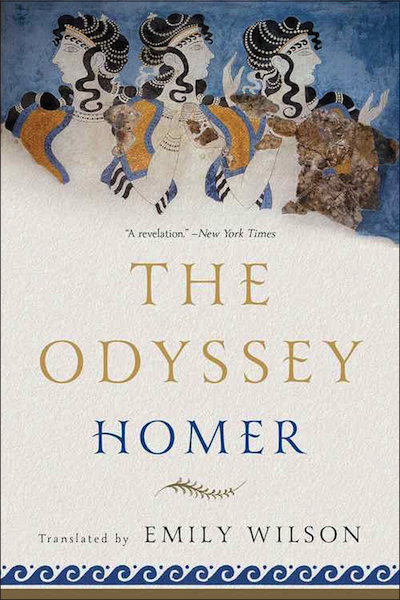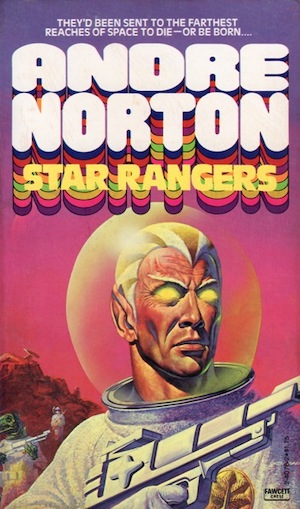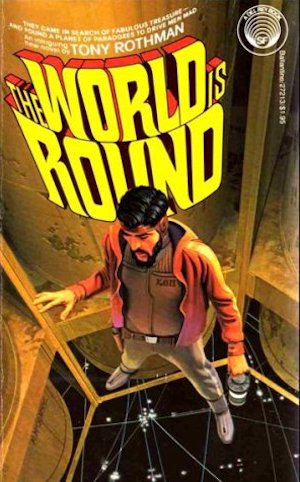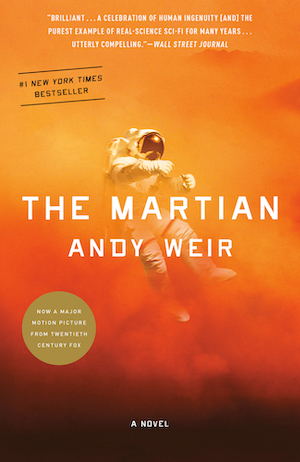Nothing is as poignant as the realization mid-trip that one has only a brief sojourn in which to enjoy one’s destination. So universal is this experience that people across the planet must join together in their envy of the Boeing Starliner crew, who are approaching (at the time of posting) the third month of their eight-day visit to the International Space Station. Will the two astronauts beat Polyakov’s record? Only time will tell.
Weighing on us as it does, the idea of an extended vacation has inspired speculative fiction and spec fic-adjacent authors back to the dawn of civilization. The key insight? Making it impossible for the traveler to find an immediate, direct route home. Take these five lucky tourists.
The Odyssey by Homer (8th Century BCE)

Having invested a decade assisting Menelaus with his marital troubles, not to mention a brief but memorable foray into the equestrian miniatures hobby (albeit in the unusual 20:1 scale), one might expect Odysseus to rush back to his beloved wife Penelope. One would further expect the journey to be a brief one, as Troy was but 565 nautical miles from Odysseus’ Ithaca1. In fact, the trip took a good ten years.
Several factors facilitated Odysseus’ extended tour of every monster-and witch-haunted island between the smoldering ruins of Troy and Ithaca. First, ancient ships of the 12th century BCE were not well-suited to unbroken long sea voyages. Second, Odysseus’ companions were bold souls as eager to accidentally squander magic treasure as they were to offend a powerful witch. Finally, Odysseus’ travel plans were subject to revision by the god Poseidon, who did his best to ensure the trip home would be memorable.
Odysseus did not set out to offend a god. Having done so, he had the rare combination of unparalleled cunning, courage, and being the protagonist of an epic poem named after him to help survive the consequences. Anyone care to guess how many of Odysseus’ companions made it home alive?
Star Rangers by Andre Norton (1953)

After three thousand years of empire, Central Control is no longer central or in control. Calamity for Central Control is opportunity for would-be local warlords. Across the crumbling empire, ambitious functionaries carve out realms of their own. Patrol ships like Starfire might prove impediments to collapse. Thus, the Starfire’s final mission…
Starfire is dispatched to chart uncharted worlds for as long as it takes for the crew to perish. Not everyone does. The ship crash-lands and the lucky survivors set out to explore their new world. Their final world. A place known as Arth.
Readers might have assumed that because Norton’s target market was teenaged boys, she’d soft-pedal the dire situation in which her characters found themselves… such readers would be surprised when they actually read the book. Norton highlights some surprising grim elements, from genocidal bigotry to the epidemiological hazards of travel to long-isolated worlds.
Marooned by Martin Caidin (1964)

NASA’s most recent bid to place a man in orbit is a resounding success. Returning him safely to Earth is another matter. The retro-rockets on Major Richard J. Pruett’s vehicle malfunction. Without them, the Mercury capsule will remain in orbit. With his air rapidly running out, and no means to effect repairs, Pruett’s only course of action seems to be to come to terms with mortality.
Jim Dougherty believes rescue is possible. To achieve it, tremendous technical challenges must be surmounted. A naïve person would conclude that delivering a two-man Gemini capsule to orbit within the forty-eight hours before air runs out is impossible. It is… unless help arrives from a very unexpected source.
Viewers familiar with the 1969 version of the novel and/or the film of the same name may find the description unfamiliar. This is because the filmmakers took liberties, not least expanding the cast of castaways from one to three, and Caidin revised his novel accordingly. In one of those odd quirks of fate, the film had its brief theatrical release shortly before the Apollo 13 mishap, a more serious crisis that the real NASA handled more adroitly than the fictional characters of Caidin’s novel.
The World Is Round by Tony Rothman (1978)

Returning from a recent mission, Hendig’s tale of an impossibly huge, yet habitable planet in the Barythron system is manifestly nonsense. Nevertheless, the riches to be won if there’s even a kernel of truth in the story inspires businessman Pike to fund and mount an expedition to Barythron. Astonishingly, unreliable Hendig has told the truth: Barythron’s habitable world is the size of a gas giant, yet has a solid, habitable surface. How can this be? Because the world in question, Patra-Bannk, is a vast artifact.
It is a truth universally acknowledged, that a world-sized artifact in possession of a mysterious past, must be in want of castaways forced by circumstance to explore. The crew wastes little time getting scattered, marooned, captured by locals, and thoroughly entangled in local politics. Along the way the visitors will learn much about Patra-Bannk. Or at least the survivors will.
A gas-giant-sized world is impractically huge to explore on foot. Therefore, it is helpful that the builders provided rapid transit. As well, the builders seem to have put considerable thought into ensuring the artifact was self-sustaining. As it turns out, not quite self-sustaining enough. Still, one good solar flare won’t send it falling into its sun, unlike certain other megastructures I could mention.
The Martian by Andy Weir (2011)

Threatened by an encroaching sandstorm, the Ares 3 crew cut short their stay on Mars, fleeing to the safety of their orbiting spaceship Hermes. Or rather, all but one of the crew flee. Mark Watney, impaled by flying debris, is left for dead on Mars.
Mark is not dead. Mark would like to remain not dead. Furthermore, Mark would like to return to Earth. Rescue depends on factors outside Mark’s control. Staying alive long enough to give his crewmates and the team on Earth a chance to pull off an implausibly bold rescue bid is up to Mark. Can Mark survive Mars’ hostile environment? Can Mark survive the unexpected consequences of his own innovative schemes?
To some, the film adaptation of this provides yet another example of why America should stop sending Matt Damon places. I remember the novel fondly as one of the works that ended a several-decade-long drought of near-future, hard SF novels set in the Solar System.
As long as there has been travel, travelers have been encountering unforeseen complications. The above are only a few of the works I could have mentioned—I didn’t even get to Robinson Crusoe on Mars! Feel free to regale us with exemplary works I’ve overlooked.
- Odysseus’ Ithaca is not the one in New York State. ↩︎










